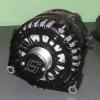
To fix, or not to fix...
By
hdrox88, in Amplifiers / Head Units / Processors / Electrical
-
Recently Browsing 0 members
No registered users viewing this page.
-
-
Recent Topics
-
- 400 comments
- 34,180 views
-
- 19 comments
- 383 views
-
- 3 comments
- 107 views
-
- 4 comments
- 206 views
-
- 2 comments
- 762 views
-
- 5 comments
- 1,612 views
-
-
-
Recent YouTube Posts



